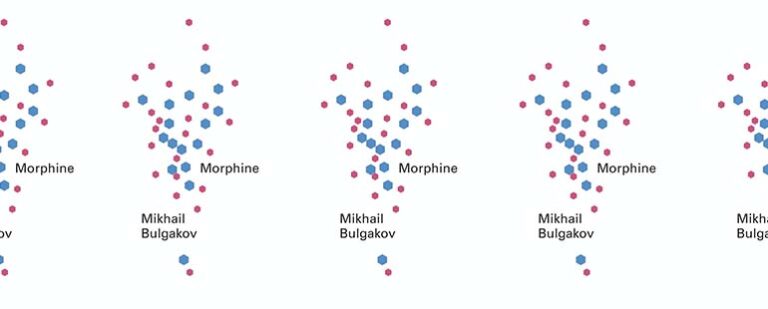The Social Effects of Technology in Terminal Boredom

Technology can be a difficult topic to handle within fiction. Some writers, like Lauren Oyler in Fake Accounts (2021) or Patricia Lockwood in No One is Talking About This (2021), tackle technology and social media head-on, making it key to the plot, while others decide to omit any mention of social media or even smart phones in their work altogether. Part of this struggle is practical: there are countless examples of writers trying to organically integrate technology into their work only for that technology to painfully age what they’ve written when it’s revisited years later. The delicate balance between remaining grounded in the present and having some foresight into technological advances seems to be what causes some works to flounder while others, like Octavia E. Butler’s Parable of the Sower (1993), are seen, decades later, as prophetic.
Like Butler, Japanese writer and actress Izumi Suzuki had a remarkable ability to depict technology in ways that remain startlingly prescient decades after her death in 1986. The stories that appear in Terminal Boredom, her English language debut published in April in translation by Polly Barton, Sam Bett, David Boyd, Daniel Joseph, Aiko Masubuchi, and Helen O’Horan, also highlight her deft handling of technology’s relationship to human life. In most of the stories within, readers are dropped into worlds in which characters have acclimated to the advanced technologies available to them; as a result, in addition to seeing the ideas of a prescient mind, readers get a deep exploration into how technological innovations have impacted—or not—human interaction.
In “You May Dream,” for example, Suzuki creates a future in which the government addresses overpopulation through a sort of draft system—citizens are sent a slip through a lottery system that tells them whether they will be put to sleep, in a sort of stasis, for an indeterminate amount of time, in the hopes of curbing the crisis. Those put to sleep are able to be transferred into the dreams of another person, becoming a part of their consciousness that is able to see and interact with the person who is dreaming. The story centers on two women, one of whom has received the slip. She asks the other, our narrator, to let her be transferred into her dreams; the narrator begrudgingly accepts. Through their interactions within various dreams, Suzuki creates a haunting atmosphere in which the technology at hand is merely the vehicle for exploring human relationships—as the woman with the slip vents to the narrator, the narrator listens half-heartedly, thinking, “She wasn’t interested in what I had to say. She was just talking at me. But that’s the way we’d talk: dueling monologues, each of us in a bubble all her own, no hope of getting anywhere.” Although these characters live in a world with technology advanced enough to accomplish consciousness transfer, this technology does not actually solve any of their interpersonal problems. The two women remain at bitter loggerheads throughout their interactions—both physical and otherwise—until the narrator decides to delete the other woman from her dreams.
Technology’s inability to solve human issues is a common thread throughout many of the stories in Terminal Boredom. Yet, Suzuki does not necessarily posit that technology is the issue itself; instead, there is a sense that hope in the promise of technological advancement is a misguided, futile thing. Her characters are therefore not necessarily pessimistic but rather ambivalent about the worlds they inhabit and the technologies they use to try to alleviate their psychological struggles. They have lived with their respective technologies for long enough to have experienced the erosion of hope until finally the issues themselves—interpersonal problems between partners, families, friends, society, and even planets—emerge at the core. And so, even when Suzuki is exploring relationships between sentient non-human creatures, such as beings from other planets as in the short story “Forgotten,” across the collection many of the same struggles appear: miscommunication, distrust, the breakdown of love over time.
“That Old Seaside Club” provides another glimpse into this ambivalence that permeates the lives of most of Suzuki’s characters. The narrator is a woman in her thirties who is visiting what appears to be a resort town, where she interacts with others at various bars, shopping centers, and clubs. Rather than being an actual resort town, however, we learn that the entire location is a simulation developed as a sort of psychological “reboot” for those with various ailments, ranging from depression, anxiety, to substance use disorder. The treatment does not seem to be working for the narrator, who is dealing with problems in her marriage. As one doctor says when she wakes up from the simulation: “You didn’t get what you were looking for.” Yet again, Suzuki’s characters live in a world advanced far beyond ours, technologically speaking, but the technology does not fulfill its promise. Instead, the narrator thinks, “I no longer care about happiness or unhappiness. I just hope the scenery’s pretty, wherever I am.” While the story ends with the narrator attempting a sort of reconciliation with her husband, there is still no neat, “happy” ending brought about by the successful use of the simulation technology. The intra- and interpersonal issues remain.
Part of what makes Suzuki’s storytelling so engrossing is her ability to depict existential boredom and grim, sometimes terrifying, futures without falling into fatalism. Although many of her characters exist in a state of near hopeless ambivalence, and even though there are instances in which characters die, the stories themselves are open-ended—while Suzuki is clear that the technologies these characters interact with will not save them, she is not necessarily pessimistic about the future of humanity. Her stories depict a humanity that continues to struggle with many of the same issues that we see today, but there is also within them a sense of possibility: a character in crisis could fall back into their cycle of ambivalence and terminal, often self-destructive, boredom, but there is also a chance that they will do something different. And this is where we see the true prescience of Suzuki: though Terminal Boredom is fascinating in its description of imagined technologies, her depiction of human beings interacting with one another in worlds dominated by technology reveals who we are.
This piece was originally published on September 24, 2021.


